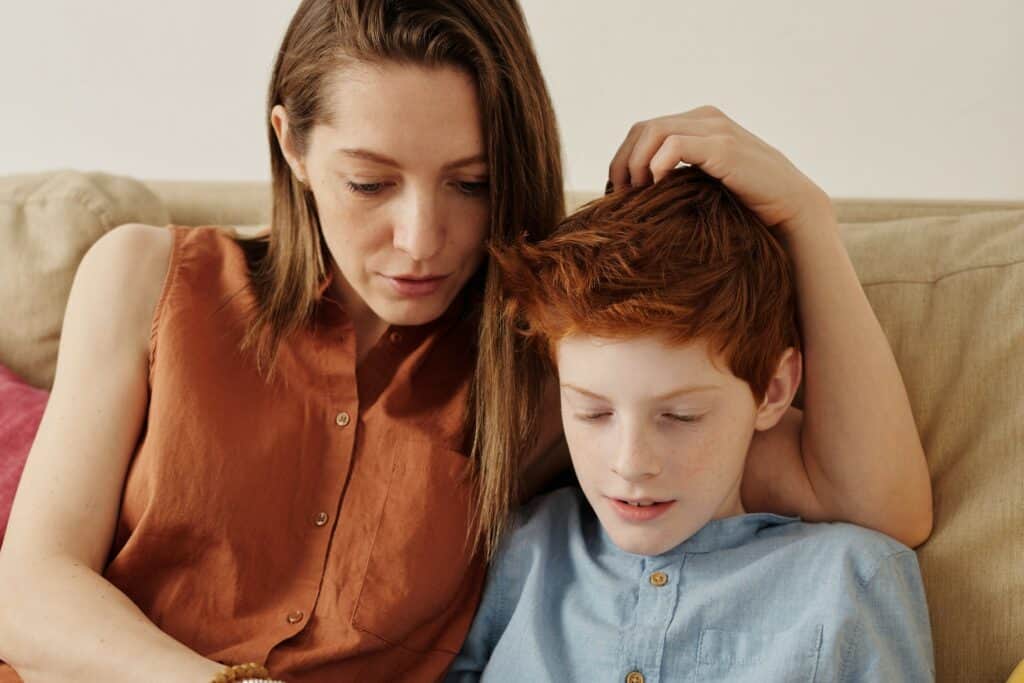Explaining politics to a child can be a daunting task, especially when it comes to the differences between Democrats and Republicans. However, it is important to teach children about politics and the importance of voting, as it is an essential part of being an informed citizen. By explaining the basic concepts of each party and their key issues, parents can help their children understand the political landscape and make informed decisions when they are older.
The Democrats and Republicans: Symbols and Colors
The first step in explaining the differences between Democrats and Republicans is to introduce the symbols and colors associated with each party. Democrats are often represented by a blue donkey, while Republicans are represented by a red elephant. The colors blue and red are also associated with each party, with blue representing Democrats and red representing Republicans. By introducing these symbols and colors, children can begin to understand the basic differences between the two parties.
Key Takeaways:
- Introduce the symbols and colors associated with Democrats and Republicans.
- Explain the key issues that each party supports.
- Emphasize the importance of voting and being an informed citizen.
Understanding Politics
What is Politics?
Politics refers to the activities and processes associated with the governance of a country or region. It involves decision-making, power relations, and the distribution of resources. Politics is an essential aspect of a democratic society as it allows citizens to participate in the decision-making process and influence the policies that affect their lives.
Political Parties in the United States
Political parties are organizations that represent different ideologies and interests in the political system. In the United States, the two main political parties are the Democratic Party and the Republican Party.
The Democratic Party is generally associated with liberal policies, which prioritize social justice, equality, and individual rights. They tend to support policies such as universal healthcare, environmental protection, and progressive taxation.
On the other hand, the Republican Party is generally associated with conservative policies, which prioritize individual responsibility, free markets, and limited government intervention. They tend to support policies such as lower taxes, deregulation, and a strong national defense.
It is important to note that political parties are not fixed entities, and their policies and platforms can change over time. Additionally, not all Democrats or Republicans hold the same beliefs, and there are varying degrees of ideological diversity within each party.
Understanding politics and political parties is crucial in a democratic society, as it allows citizens to make informed decisions and participate in the political process.
The Democrats and Republicans

History of the Parties
The Democratic Party and the Republican Party are the two major political parties in the United States. The Democratic Party was founded in 1828, while the Republican Party was founded in 1854. Both parties have a long and complex history, with many changes in their beliefs and policies over time.
The Democratic Party has historically been associated with progressive and liberal policies, such as support for civil rights, social welfare programs, and labor unions. The party’s base consists of diverse groups, including minorities, women, and young people. In recent years, the party has also focused on issues such as climate change and healthcare reform.
The Republican Party, on the other hand, has traditionally been associated with conservative and libertarian policies, such as limited government, free market capitalism, and individual rights. The party’s base consists of white, Christian, and rural voters, as well as business interests. In recent years, the party has also focused on issues such as immigration and national security.
Core Beliefs of Democrats and Republicans
The core beliefs of Democrats and Republicans can be summarized as follows:
Democrats
- Support for social welfare programs and government intervention in the economy
- Support for civil rights and social justice
- Support for environmental protection and action on climate change
- Support for progressive taxation and income redistribution
- Support for healthcare reform and universal healthcare coverage
Republicans
- Support for limited government and free market capitalism
- Support for individual rights and personal responsibility
- Support for traditional values and social conservatism
- Support for a strong national defense and law and order policies
- Support for lower taxes and deregulation
Overall, the differences between Democrats and Republicans reflect different visions of the role of government in society and the economy. While there is some overlap between the two parties on certain issues, such as trade and foreign policy, the core beliefs and values of each party are distinct and often in opposition to one another.
Symbols and Colors
The Donkey and the Elephant
One way to differentiate between Democrats and Republicans is by looking at their symbols. Democrats are often associated with the donkey, while Republicans are associated with the elephant. These symbols have been used for over a century, and their origins are rooted in political cartoons.
The donkey was first used as a symbol of the Democratic Party in 1828, when it was used to mock Andrew Jackson’s stubbornness. The symbol was embraced by the party, and it has been used ever since. The elephant, on the other hand, was first used as a symbol of the Republican Party in 1874, when it was used to represent the party’s strength and power.
Blue and Red
Another way to differentiate between Democrats and Republicans is by looking at their colors. Democrats are often associated with the color blue, while Republicans are associated with the color red. However, it is important to note that this association is a relatively recent development.
Prior to the 2000 presidential election, the media did not consistently use the colors blue and red to represent the two parties. In fact, the colors were often reversed. However, after the 2000 election, the media began using the colors consistently, and the association has stuck.
It is important to note that these symbols and colors are just that – symbols and colors. They do not represent the entirety of the parties, and they should not be used as a sole basis for understanding the differences between Democrats and Republicans.
Key Issues and Differences

Economic Policies
One of the main differences between Democrats and Republicans is their economic policies. Democrats generally believe in higher taxes on the wealthy, more government spending on social programs, and greater regulation of businesses. They tend to support policies that promote economic equality and social responsibility. On the other hand, Republicans generally believe in lower taxes, less government spending, and less regulation of businesses. They tend to support policies that promote individual rights and free market capitalism.
Social Issues
Democrats and Republicans also have differing views on social issues. Democrats tend to support abortion rights, gun control, and social safety net programs. They generally believe in a more active role for government in promoting social equality and protecting individual rights. Republicans, on the other hand, tend to oppose abortion rights, support gun rights, and favor limited government intervention in social issues. They generally believe in a more traditional approach to social issues and individual responsibility.
Role of Government
The role of government is another key difference between Democrats and Republicans. Democrats tend to support a larger and more active government, with greater involvement in areas such as healthcare, education, and social welfare. They believe that government has a responsibility to provide for the needs of its citizens and to promote social equality. Republicans, on the other hand, tend to support a smaller and less active government, with less involvement in areas such as healthcare and social welfare. They believe that government should have a limited role in people’s lives and that individuals should be responsible for their own well-being.
Overall, the differences between Democrats and Republicans are complex and multifaceted, and cannot be fully captured in a single article. However, by understanding the key issues and differences between the two parties, parents can help their children develop a basic understanding of the political landscape and the values that drive each party’s policies.
Explaining to Children
When it comes to explaining politics to children, it can be a difficult task. However, it is important to have age-appropriate discussions with kids about the difference between Democrat and Republican parties. Here are some tips on how to explain it to children.

Age-Appropriate Discussions
The first thing to consider when explaining politics to children is their age. It is important to have age-appropriate discussions that are easy for kids to understand. For younger children, it may be best to keep the conversation simple and use examples that they can relate to. For older children, you can dive deeper into the differences between the two parties.
Using Metaphors
Using metaphors can be a great way to explain complex ideas to children. For example, you can explain the difference between Democrat and Republican parties by using the analogy of a pizza. Democrats believe in sharing the pizza equally among everyone, while Republicans believe in letting people keep their own slices. This can be a fun and easy way for children to understand the basic differences between the two parties.
Neutral Explanation
It is important to remain neutral when explaining politics to children. It is not necessary to push your own political beliefs onto them. Instead, provide a neutral explanation of the difference between Democrat and Republican parties. Explain that both parties have different ideas on how to run the country, and that it is up to each individual to decide which party they agree with.
Overall, explaining Democrat vs Republican to children can be a challenging task. However, by having age-appropriate discussions, using metaphors, and providing a neutral explanation, it can be made easier for kids to understand the basic differences between the two parties.
The Importance of Voting
Voting is an important part of being a citizen in a democracy. It is a way for people to have a say in who represents them and how their government is run. In the United States, there are two main political parties: Democrats and Republicans. Each party has its own beliefs and values, and it is important for children to understand the differences between the two.

Election Season
During an election season, candidates from each party will campaign to try and convince people to vote for them. They will make speeches, hold rallies, and advertise on TV and social media. It can be overwhelming for children to see all of this, but it is important to explain to them that this is how democracy works. People are free to choose who they want to represent them, and it is up to the candidates to convince voters that they are the best choice.
Representation in Government
When people vote, they are choosing who they want to represent them in government. This is important because it means that everyone has a voice. If someone does not vote, they are giving up their right to have a say in how their government is run. It is important to explain to children that even if their candidate does not win, their vote still matters. Every vote counts, and it is important to participate in the democratic process.
In conclusion, voting is an important part of being a citizen in a democracy. It allows people to have a say in who represents them and how their government is run. During an election season, candidates will campaign to try and convince people to vote for them. When people vote, they are choosing who they want to represent them in government. It is important for children to understand the importance of voting so that they can become informed and engaged citizens.
Further Discussion
It’s important to remember that politics can be a complex and nuanced topic, even for adults. While children may not fully understand all the intricacies of Democrat vs Republican, it’s still important to encourage them to ask questions and be curious about the world around them.

When discussing politics with children, it’s important to remain neutral and avoid expressing personal biases or opinions. Instead, focus on providing factual information and encouraging critical thinking.
One way to help children understand the differences between Democrats and Republicans is to discuss their values and beliefs. For example, Democrats tend to prioritize social justice and equality, while Republicans tend to prioritize individual liberties and personal responsibility.
It’s also important to discuss the role of government and how it affects individuals and communities. Children can learn about the different levels of government, from local to federal, and how they work together to create laws and policies.
When discussing political issues such as gay marriage or anti-slavery, it’s important to approach the topic with sensitivity and respect for all individuals and communities involved.
Overall, the goal of discussing politics with children should be to encourage critical thinking and a deeper understanding of our democracy and government. By remaining neutral and providing factual information, children can form their own opinions and become engaged citizens in the future.
Frequently Asked Questions
What are the basic beliefs of Democrats and Republicans?
Democrats generally believe in a larger government that provides more social programs and support for the disadvantaged. They tend to support higher taxes on the wealthy to fund these programs. Republicans, on the other hand, believe in smaller government and lower taxes, allowing individuals and businesses to keep more of their money and make their own decisions.
What is the difference between liberal and conservative?
Liberal and conservative are terms used to describe political beliefs. Liberals tend to support progressive social policies and government intervention in the economy, while conservatives tend to support traditional social values and free market capitalism.
Democrats tend to support more progressive social policies, such as same-sex marriage, abortion rights, and gun control. Republicans tend to support more traditional social values, such as traditional marriage, pro-life policies, and Second Amendment rights.
What is the role of the government according to Democrats and Republicans?
Democrats tend to believe that the government should play a larger role in providing social programs and regulating the economy. Republicans believe that the government should have a smaller role and that individuals and businesses should have more freedom to make their own decisions.
Which political party supports more funding for education?
Democrats generally support more funding for education, while Republicans tend to support school choice and voucher programs.
How do you explain the two-party system to a child?
The two-party system means that there are two main political parties in the United States, the Democrats and the Republicans. These parties have different beliefs about how the government should work and what policies it should support. When people vote in elections, they usually choose between candidates from these two parties.

Iesha is a loving mother of 2 beautiful children. She’s an active parent who enjoys indoor and outdoor adventures with her family. Her mission is to share practical and realistic parenting advice to help the parenting community becoming stronger.
